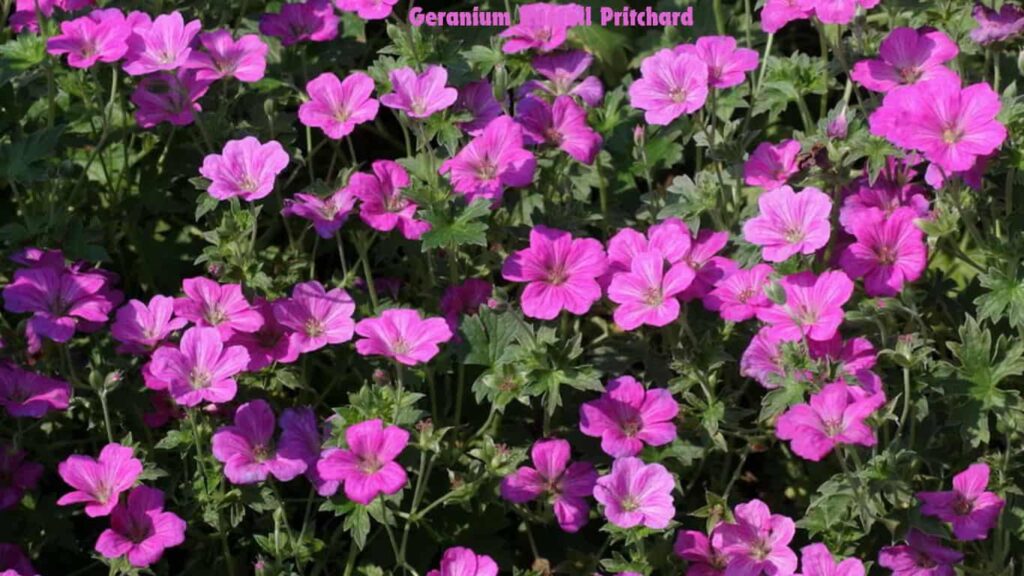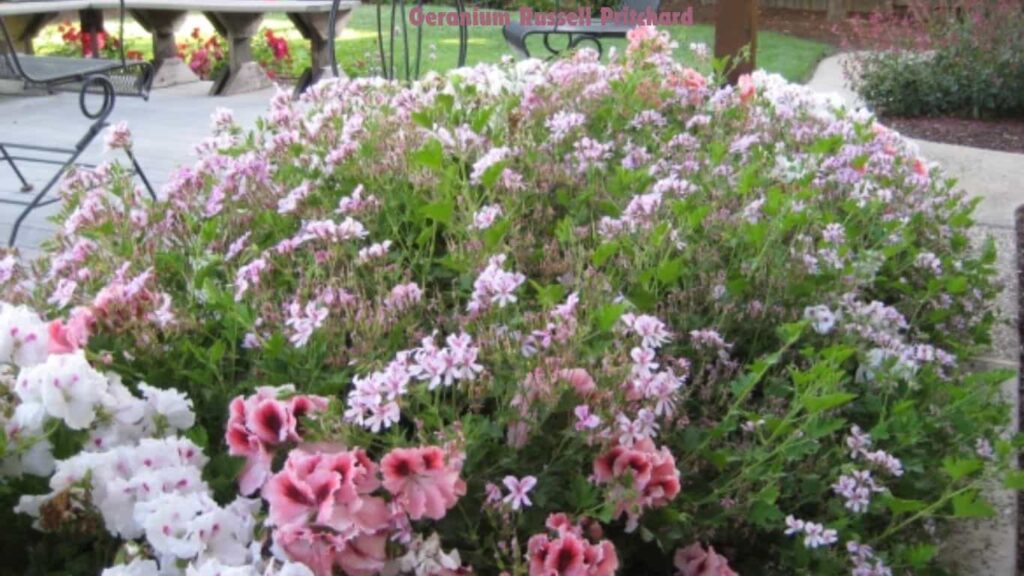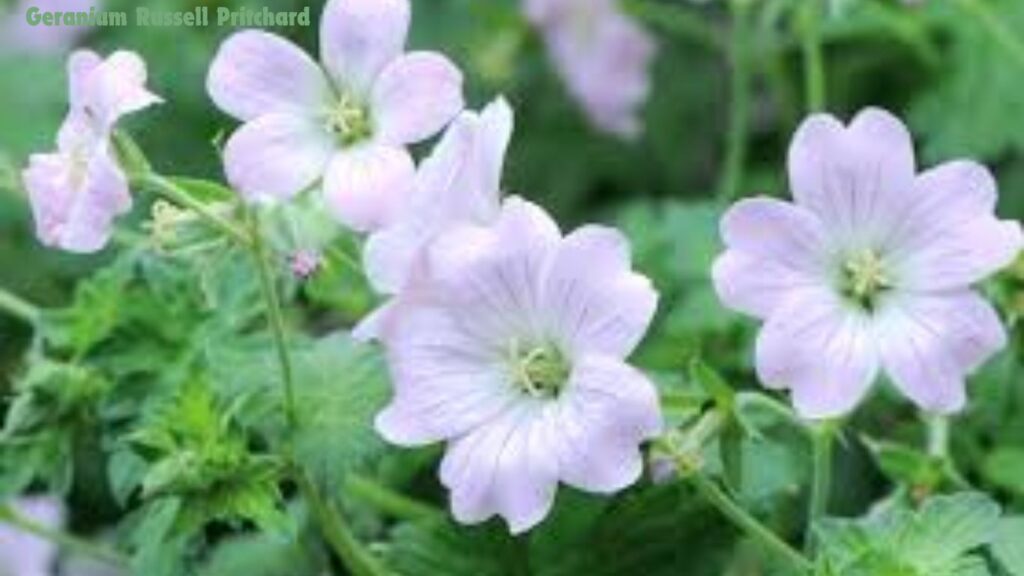Geranium Russell Pritchard- Condition, Care & Uses
Geranium Russell Pritchard is a nursery most loved known for its striking looks and toughness.
Whether you’re an accomplished nursery worker or a beginner, this geranium offers a superb addition to any open air space.
Its dynamic sprouts and rich foliage make it a winner in blossom beds, lines, and cases.
In this article, we’ll explore all that you really want to be familiar with designing and really focusing on Geranium ‘Russell Pritchard,’ providing your nursery stays vivid and growing all through the seasons.
What is Geranium Russell Pritchard?
Geranium Russell Pritchard is an variety of perpetual geranium that has caught the respect of grounds-keepers because of its unique qualities and clarity of care.
Dissimilar to the yearly geraniums that many are know all about, this variety is constant, meaning it will return a large number of years with the fair reflection.
The plant is named after a horticulturist who donated fundamentally to the universe of growing, adding verifiable importance to its appeal.

This specific geranium is valued for its long blossoming season and ability to flourish in different nursery settings.
Whether you’re hoping to upgrade a bright boundary or add surface to a holder garden, Geranium Russell Pritchard is a flexible decision.
Its capacity to adjust to various soil types and light circumstances makes it a strong expansion to any garden.
Physical Characteristics
Geranium Russell Pritchard is apparent by its beguiling qualities. The plant ordinarily grandstands light, ruddy pink flowers that sprout in groups, making a shocking visual expression in any nursery.
Each bloom is made out of five delicate petals, giving it a work of art, basic looks that demands the same from both prepared landscapers and learners.
The foliage of Geranium Russell Pritchard is also appealing. The leaves are profoundly lobed with a somewhat serrated edge, making a finished formation that adds deepness to plant plans.
The leaves are often rich green, giving an ideal background to the lively pink blossoms. This mixture of geranium fills in a smaller, rugged structure, getting a typical level of 12 to 18 inches.
This goes with it a great conclusion for edging garden beds, filling in holes in boundaries, or in any event, filling in holders on stoops or overhangs.
Optimal Growing Conditions
To succeed, Geranium Russell Pritchard requires direct budding circumstances. Here is a breakdown of what you want to change this superb plant:
Soil Requirements: Geranium Russell Pritchard lean towards well-depleting soil rich in natural matter.
A loamy or sandy soil that holds dampness however doesn’t become saturated is great.

Adding fertilizer or very much bad waste can further develop soil ripeness and design, ensuring your geranium has the supplements it necessities to prosper.
Light Tilts: This Geranium Russell Pritchard mixture in all actuality does well in full sun to fractional shade. Preferably, it ought to get somewhere around 4 to 6 hours of direct daylight every day.
In more smoking conditions, giving some midday shade can assist with keeping the plant from becoming concentrated by excessive intensity.
Watering Needs: Steady watering is vital to keeping up with sound Geranium Russell Pritchard plants. The dirt ought to be kept uniformly sodden yet not wet.
Water the plant completely when the top inch of soil feels dry. During hot, droughts, you might have to water all the more as often as likely to keep the plant from drying out.
Planting Geranium Russell Pritchard
Showing Geranium Russell Pritchard is clear and fulfilling. Here is a bit by bit manual for start your plant off in great shape:
Best Chance to Plant: The best chance to establish Geranium ‘Russell Pritchard’ is throughout the spring or late-summer.
Installing in these seasons allows the plant to lay out its underlying bases before the excessive temperatures of summer or winter set in.
Setting up the Dirt: Begin by setting up the establishing site. Guarantee the dirt is well-depleted and advanced with fertilizer or natural matter.
If you’re establishing in a compartment, pick a pot with waste openings and utilize a top-notch preparing blend.
Digging the Opening: Dig an opening that is two times as wide and similar in depth to the root wad of your geranium. This gives the roots more than sufficient space to fan out and set up a good basis.
Establishing the Geranium: Delicately remove the geranium from its holder and sprinkle it in the focal point of the opening.
Ensure the highest point of the root ball is level with the encompassing soil. Fill the strap with soil, firming it delicately around the plant to wipe out air purses.
Care and Maintenance
Focusing on Geranium Russell Pritchard includes a couple of key techniques to guarantee the plant stays sound and dynamic:
Preparation Tips: To advance excellent development and plentiful flowers, apply fair, water-dissolvable manure once every month during the developing season (spring through summer).
Abstain from over-preparing, as this can prompt excessive foliage development to the harm of blossoms.

Pruning and Deadheading: Normal pruning and deadheading are essential for maintaining the plant’s arrival and stimulating more sprouts.
Deadhead spent blossoms by shrinking or removing them over the principal set of solid leaves.
Pruning back any blocked or leggy stems can likewise help keep the plant minimal and irregular.
Problem and Disease The board: Geranium Russell Pritchard is generally bother-safe, yet it’s critical to watch out for normal issues.
Check for aphids, bug vermin, and whiteflies, which can be controlled with insecticidal cleanser or neem oil. Guarantee fair air flow around the plant to forestall parasitic disorders like fine buildup.
Companion Planting
Geranium Russell Pritchard blends perfectly with various different plants, enhancing both tasteful allure and nursery wellbeing. This is the way to take full benefit of friend planting:
Best Plants to Coordinate With: Geranium Russell Pritchard functions admirably with other blooming plants like roses, lavender, and salvia.
The delicate pink flowers of the geranium increase the extreme shades of roses and the purple tones of lavender.
These mixes make an outwardly interesting difference and add depth to your nursery plan.
Also, plants, for example, ornamental grasses and low-developing perennials can give a great view and feature the geranium’s dynamic flowers.
Advantages of Sidekick Planting: Matching Geranium Russell Pritchard with integral plants offers a few advantages.
For example, setting it close to lavender can help prevent disturbances because of lavender’s natural anti-agents.
Joining it with flowery grasses gives a textural contrast, enhancing the general nursery plan.
Besides, proper buddy planting can also develop plant well-being by reducing the risk of illness and feud for support.
Common Problems and Solutions
Geranium Russell Pritchard is for the most part low-upkeep, however like any plant, it can share a couple of issues. This is the way to determine and take care of normal issues:
Identifying Normal Issues
Yellowing Leaves can indicate overwatering, miserable seepage, or accessory lacks. Assuming the leaves are becoming yellow and the dirt is soaked, you may be overwatering. Take a look at the waste and lessen watering reproduction if necessary.
Shrivelling: Shrinking can happen because of both underwatering and overwatering. If you believe the dirt is dry, increase your watering.
If you consider the dirt wet and the plant is shrinking, check for root pollution and change your watering practices properly.
Bothers: Post for bugs like aphids, bug parasites, and whiteflies. They can cause harm by helping from the plant’s sap and leaving adhesive buildups.
Uses in Garden Design
Geranium Russell Pritchard is a relaxed plant that enhances different nursery plans. This is the way you can combine it into your outside spaces:
Scene Thoughts: Geranium Russell Pritchard is great for making active nursery beds and borders.
Its conservative development bent and bountiful flowers make it ideal for filling in holes and adding variety to combined plantings.
Plant it along walkways or at the front of blossom beds for a striking visual effect. Its hairy structure likewise functions admirably as a ground cover, adding goodness and surface to your nursery.
Enclosure Growing: This geranium variety succeeds in holders, making it an exceptional choice for decks, overhangs, and little nursery spaces.
Pick a pot with great waste and fill it with an perfect practice blend. Geranium ‘Russell Pritchard’ will add a spray of variety and polish to holder plans.
Combine it with different plants like following lobelia or upstanding salvias for a unique holder show.
Cost and Availability: While considering Geranium Russell Pritchard for your nursery, understanding its expense and accessibility can assist with arranging and planning. This is the thing you want to be aware:
Cost Factors: The cost of Geranium ‘Russell Pritchard’ can shift in view of a few variables, including the size of the plant, the nursery or greenhouse focus, and the season.
For the most part, youthful plants or seedlings might cost between $5 to $15 each, while bigger, deep rooted plants can be more expensive.
Moreover, assuming you’re buying from thing nurseries or online retailers, costs may be higher.
Where to Get: You can find Geranium Russell Pritchard at neighborhood garden focuses, nurseries, and online plant retailers.
Garden focuses often have a choice of periodic plants, so accessibility might differ in view of the season.
Online retailers furnish a helpful choice with a great many findings and can often convey straightforwardly to your entry.
Popular Varieties and Similar Plants
While Geranium Russell Pritchard is a champion finding for some nursery workers, it’s helpful to be familiar with close diversity and related plants that may adjust your cultivating needs.
Famous Varieties Of Geraniums
Geranium ‘Rozanne’: Known for its lengthy nature and practical sprouts, ‘Rozanne’ produces hitting blue flowers with white focuses. It’s a superb decision for ground cover or huge holders.
Geranium ‘Johnson’s Blue’: This variety stresses lively blue flowers and a somewhat more traditional growth disposition determined with ‘Russell Pritchard.’ It’s ideal for lines and cases.
Geranium ‘Biokovo’: With its delicate pink flowers and sweet-smelling foliage, ‘Biokovo’ is an perfect choice for making a soft nursery space. It’s just for bright and, to some degree, covered areas.
Conclusion
Geranium ‘Russell Pritchard’ is a magnetic and adaptable plant that offers beauty and strength to any garden.
With its vibrant blooms, attractive foliage, and adaptability to various growing needs, it is an perfect choice for both novice and skilled gardeners.
Whether you’re looking to enhance garden beds, create stunning container displays, or add a splash of color to your outdoor spaces, this geranium can meet your needs.
Following the tips for planting, care, and care, you can ensure that your Geranium ‘Russell Pritchard’ remains healthy and vibrant throughout the growing season.
Its compatibility with other plants, ease of propagation, and seasonal adaptability make it a useful addition to your garden method.
FAQS
What not to plant with geraniums?
It is best not to pair shade-loving perennials like ferns, hostas, or coleus plants with geraniums because they will burn in the direct sun.
Do geraniums grow better in pots or ground?
Although many people use geraniums as bedding plants, we think they function even better in containers. Read on for geranium container ideas and how to care for these gardener favourites.
What eats geraniums at night?
The insect offender is Heliothis virescens also known as the Tobacco Budworm, Geranium Budworm and Petunia Budworm. It is a 1” brown moth that usually beats around the plants in the night.
How do you keep geraniums bushy?
At the end of summer or early autumn cut back geranium plants by a third to promote bushy new growth and flower buds the next season. Although geraniums are sun hardy and pretty tough once installed, they still need regular watering.
What month is best to plant geraniums?
Geraniums can be planted in the leap, from March to May, so that they can get selected before the hot climate and give you blooms all summer long.
Also Read

2 Comments